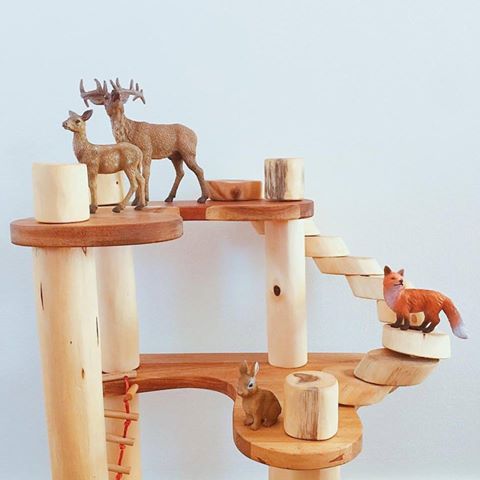How to Encourage Independent & Creative Play in Kids
Mar 03, 2017

Independent & Creative Play is surprisingly simple. It means we allow our children to explore the world and play on their own terms. When we stop needing to entertain our children but let them engage in open ended and free play, we help create independence and the ability for a child to occupy themselves. This also allows their creativity to flourish.
According to Janet Lansbury, a modern proponent of RIE (Resources for Infant Educarers), there are parenting methods we can employ right from the start, when our child is newborn, to encourage independence and creativity. You can read more about her approach here.
Fancy toys (like electronic toys or those with artificial lights and sounds) can actually hinder creativity and independence in children. When your child becomes the passive recipient of a toy whose main purpose is simply to entertain, they stop developing their own creative abilities and will increasingly need to rely on more and more stimulation to stop the feeling of boredom.
We've compiled a list of 8 simple ways you can encourage creative and independent play in your children from a young age:
8 Ways to Encourage Creative & Independent Play from Pre-School Age:
#1 Choose open ended toys that allow children to develop their imagination and creativity, over noisy and bright toys which capture their attention for only short moments or simply entertain them without any creative input. Some excellent examples of open ended toys are wooden blocks, wooden planks, lego, toy cars, dollhouses, toy kitchens and so on.
#2 If your child is experiencing frustration with a toy or with an attempt to do something at the playground for example, don't rush to "fix" the situation and do the job for them. Allow them to experience the frustration and find their own solutions. This allows them to build up confidence, resilience and independence.
#3 Pre-schoolers love to explore the world through touch. Give them opportunities for sensory play. Some simple examples are filling a bowl with some rice and water and allowing your child to put their hands through it; finger painting; playing with homemade play dough or even making pictures out of pasta.
#4 Allow your child to explore nature. Take them around the garden or neighbourhood to smell the flowers and plants. Together collect some items to take home.
#5 Give your kids an empty cardboard box, some scissors and tape and watch them create amazing things. This gives them the chance to use their imagination, to go on new adventures and explore imaginary places through the creations they make.
#6 Look at reusing objects you would normally throw out. For example empty toilet rolls, small plastic juice bottles, wool, paper, scissors and glue can lend themselves to endless creations.
#7 Rotate your toys. Too many toys and too many choices can overwhelm children which means they will need more parental input. Having only a few toys available with easy access at a time, means kids will feel like they are getting something new each time. This will encourage them to play with those toys, instead of getting bored or being at a loss of what to do.
#8 Create a play area for your child where they can explore their toys and the space uninhabited. Don't feel the need to always play with them - give them time each day to play by themselves. Set up different toys in the play area and see how they use them. You’ll be surprised what innovative ways they use toys when they are allowed to think out of the box. See the example below of how one group of children created some amazing play activities with one particular toy at their home day care.



Above to the left is the original Qtoys Tree House Construction Set, that one pre-school edu-carer gave to the children in her family daycare. The middle picture is how she set the toy up for her children using some toy animals. The last picture is how the children from her day-care set up the tree-house themselves using other toys. They turned the tree-house into a car park with a helicopter pad and train tracks surrounding it. They even used recycled cardboard as a "slide" for their cars, and notice the two toilet paper rolls used as a towers.
We love the children's creativity in the example above. It shows how they can adapt different toys to suit their needs and desires.
Choosing open ended toys and allowing time for free play, sensory play and exploration of nature outside are great ways to encourage creative and independent play. The skills and senses developed through this type of play and exploration will stand your children in very good stead for later on in life.

